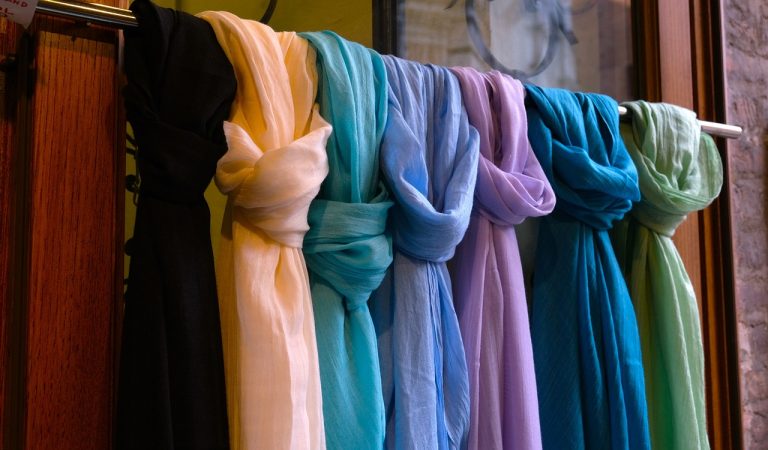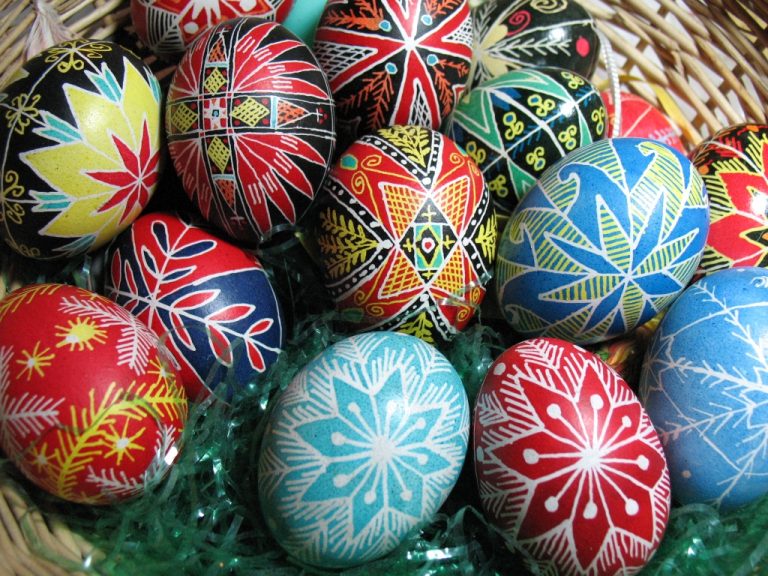In prehistoric times, all of man’s necessities came from natural materials. Earth — with its various inhabitants and elements — provided food, shelter, fuel and clothing for many thousands of years. Textiles from natural fibers have a history that coincides with the history of civilization, with evidence of woven fabrics (flax) dating back to 6,000 B.C.
As civilization developed, crude methods were refined, designs became more intricate, and fine fabric became a mark of prestige. Not too long ago, people treasured their clothing and linens, as fabric was labor intensive to make, and thus hard to come by and/or expensive. This began to change with the Industrial Revolution, and after the invention of polyesters the change was dramatic.
Now, clothing is so inexpensive that almost anyone can afford to be a slave to fashion, changing out their wardrobe with every passing trend. Polyesters, acrylics, and other man-made fibers are cheap, flexible, and nearly indestructible, but they can’t compare with the timeless beauty and refined texture of natural fibers. In this series, we will look at the fascinating process of creating a variety of natural fibers, beginning with silk.
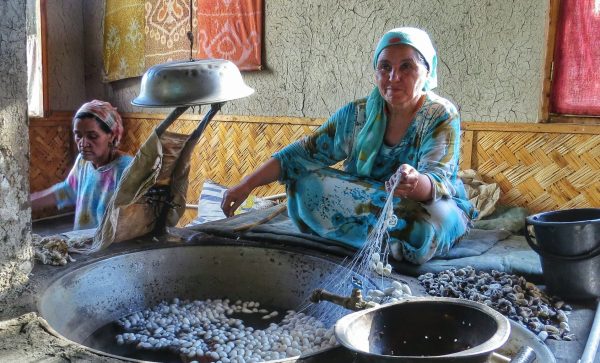
Sericulture
Silk-making dates all the way back to ancient China during the Neolithic Age (4th millennium B.C.), and remained a commodity in China until the opening of the Silk Road many millenia later. China is still the leading producer of silk, producing about 146,000 metric tons annually. China and India — contributing 28,708 metric tons — produce 60 percent of the world’s silk.
The production of silk is a long process called sericulture, which involves the raising of silkworms. The fibers are painstakingly extracted from the cocoons of pupating larvae, to create the only natural filament fiber — meaning that the fibers are long, unlike plant and animal fibers — used to sustain a multi-billion dollar industry.
The silkworm
Success
You are now signed up for our newsletter
Success
Check your email to complete sign up
The domesticated silkworm — particularly the mulberry silkworm (Bombyx mori), named after its singular diet of mulberry (Morus alba) leaves — is the key to sericulture, being the backbone of 95 percent of all the world’s silk produced.
Egg Stage
The process begins with the very first stage of the silkworm’s life — as tiny eggs of an adult silkmoth. After laying up to 500 eggs, the silkmoth passes away, leaving her eggs to be taken care of by humans. Under the right conditions, (a steady temperature of 77°F and around 80 percent relative humidity), the tiny yellow eggs hatch into larvae within around 12 days.
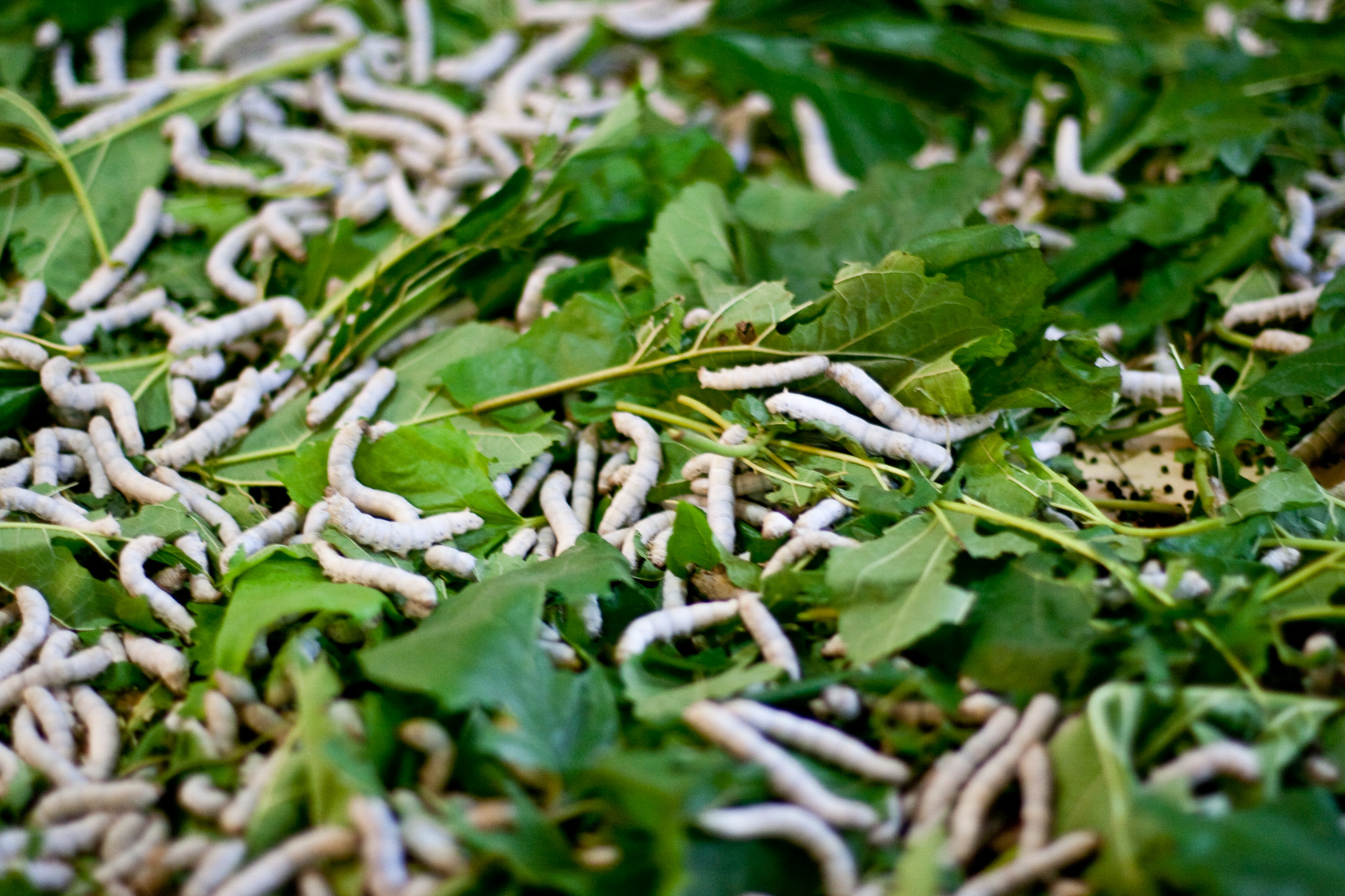
Larva Stage
Once the larvae hatch, the tiny silkworms are carefully moved to trays in the rearing room. The silkworms are fed fresh mulberry leaves daily as they grow, eventually changing color from black striped to solid white.
The larva stage is the longest in a silkworm’s life cycle, and it is divided into five instars — parts of the silkworm’s life that precede their molting periods.
Even though the silkworm grows quickly, its skin does not, so it needs to periodically molt, or discard its old skin in favor of a new one grown to fit. After 25 to 30 days in the larva stage, and having eaten about 50,000 times more than its initial bodyweight, the silkworm will begin pupating.
Pupa Stage
The fully-grown white silkworms stop eating and begin spinning their cocoons for the metamorphosis into moths. The mature silkworms are carefully placed in mountages — frame-like devices with small holes to accommodate cocoons.
The silkworms are left to spin their cocoons undisturbed, at a temperature of about 79°F and relative humidity between 60 and 70 percent. The whole structure consists of a single strand of silk fiber, which can reach an astounding length of 1,000 yards! Domesticated silkworms are grown for their white fibers, while their wild counterparts produce yellow fibers. White silk is easy to dye any color, making it ideal for the textile industry.
After around a week, the larvae metamorphose into pupae inside their cocoons.
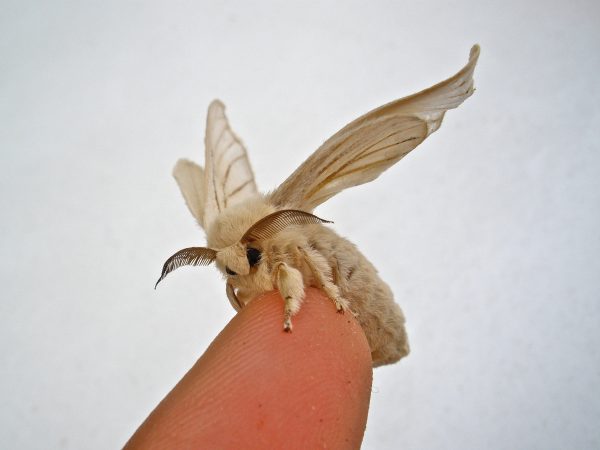
Moth Stage
The pupae transform over the course of a few weeks, but most silkworms don’t reach the moth stage, as their emergence from cocoons damages the silk strand, rendering it useless for commercial silk production. Most silkworms are killed in processing, and only a small number of moths are allowed to grow and reproduce, fulfilling the life cycle.
If you are shocked and appalled to find that caterpillars were harmed to provide you with your favorite material, you can ease your conscience by choosing humanely produced silk.
Ahimsa silk
Also known as peace silk, ahimsa — derived from the Sanskrit word meaning “noninjury” — silk is produced without killing the silkworms.
In ahimsa silk production, the cocoons are only processed after the moths have hatched, which yields shorter staples. These small staples can then be spun together, supposedly producing a form of silk that is higher in quality than regular silk, according to Wandering Silk.
Ahimsa silk may be more labor intensive to create — and thus more expensive — but this more humane approach is garnering increasing attention, and could be a viable option for the industry.
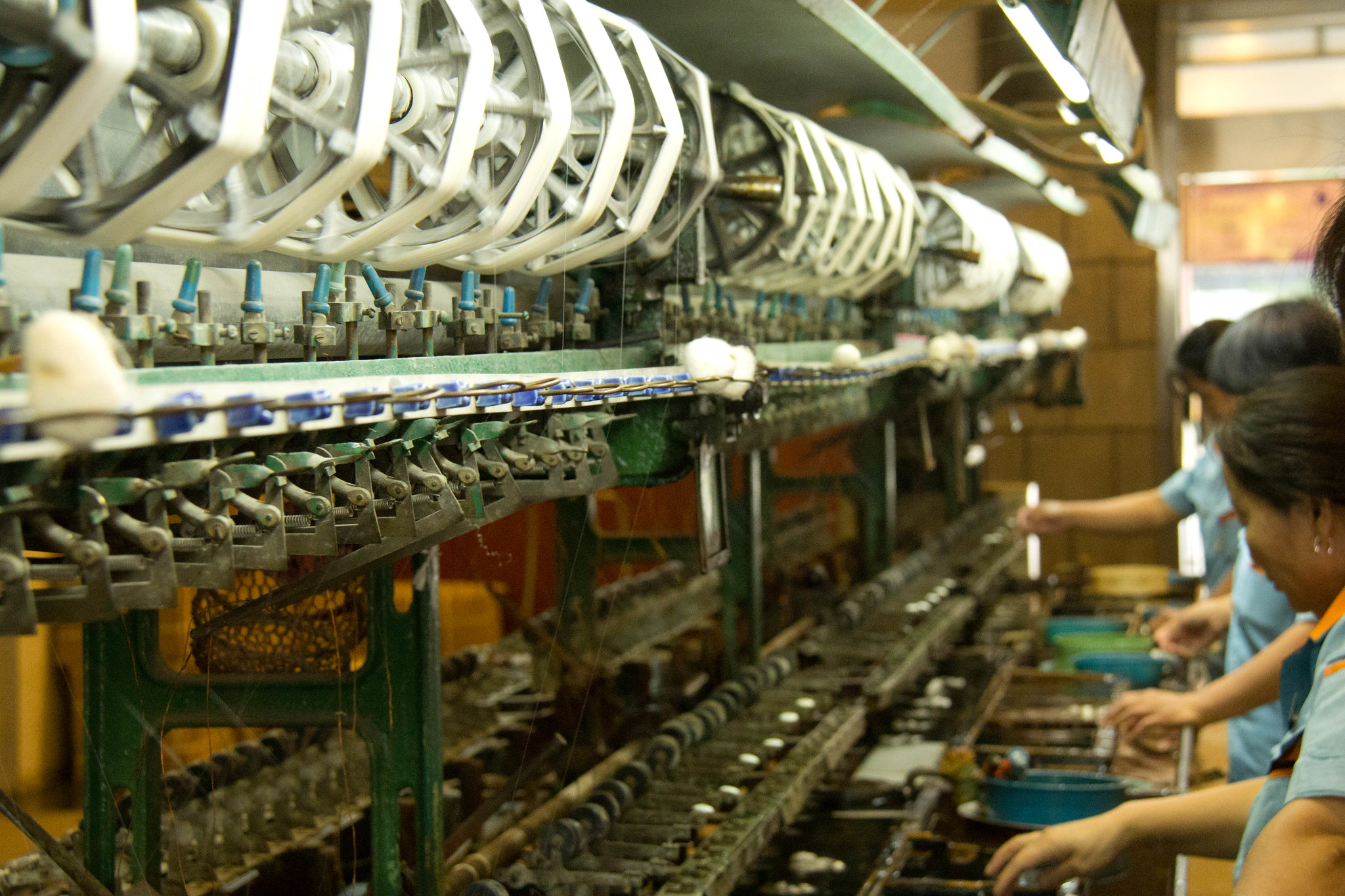
From silkworm to silk fabric
Conventionally, the cocoons are taken before metamorphosis is complete, dried for preservation, and sorted based on quality and characteristics like length, shape, color and sheen.
The cocoons are then briefly boiled for softening and degumming, which partially dissolves the sericin proteins which make silk rough and harder to dye. The softened cocoons then undergo deflossing – the removal of an outer layer of unusable fibers. The floss can be peeled off by hand, with a brush or with mechanical devices.
It takes a number of silk strands to make a single thread, and this process is called reeling. The cocoons are unwound in groups from a warm water bath, with the strands coming together as they are wound onto a spinning reel. This is traditionally done by hand, but machines have made it faster and more efficient.
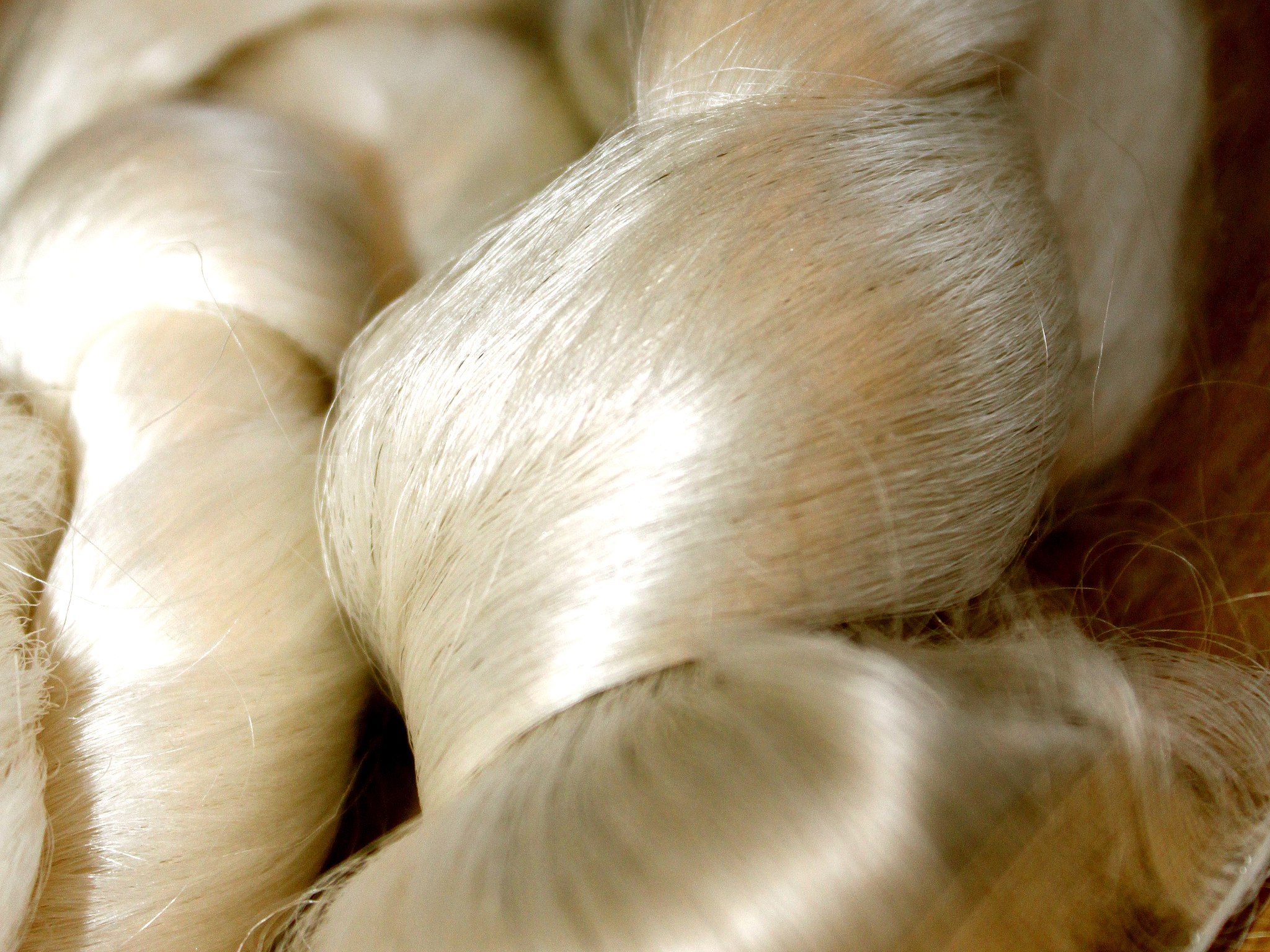
Strands of white thread, thick enough to be twisted and dyed, are spun into bundles called skeins. The skeins are easily dyed, thanks to their smooth surface and white base.
The twisted and dyed threads are wound onto spools or tubes, ready to be sold or woven into fabrics. Weaving the threads can be done in many ways — charmeuse being the most common. This weaving process produces a fabric that is especially glossy and smooth on one side, while the back is dull, increasing its appeal and value.
Because its sole purpose is to protect a helpless pupa, silk is not only extraordinarily durable for its fine quality; it also serves as a good insulator — keeping us cool in the summer and warm in the winter.
This attractive natural fiber may even have some health and beauty benefits. When used as bedding, pajamas or undergarments, silk is believed to help keep the hair and skin properly balanced in moisture, preventing itching and dryness. It is free of the many allergens found in man-made materials, and some silk even has antimicrobial properties.
READ MORE:



